When it comes to getting a great harvest from your bell peppers, knowing the right way to fertilize your plants can make all the difference between plants that are slow to grow and produce – or ones that flower and fruit like crazy!
All pepper plants consume resources from the soil in order to produce healthy foliage, blooms and fruit. Without those nutrients, the plants simply don’t have the energy they need to grow strong. And without strong roots, stems and foliage, not only will your peppers struggle to produce, they will also be more susceptible to pests and disease.
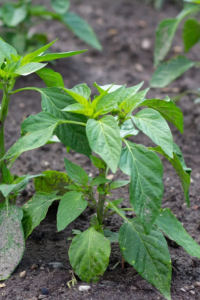
Whether you are growing sweet peppers, banana peppers, ghost peppers, or any variety in between, they all need a constant source of nutrients – and bell peppers are no exception! In fact, because their fruit is larger, they require the most of all pepper plants when it comes to nutrients.
In order to have your bell pepper plants produce all summer long, they need a consistent supply of nutrients. But when and how you give your peppers those nutrients is the real key to powering a big harvest!
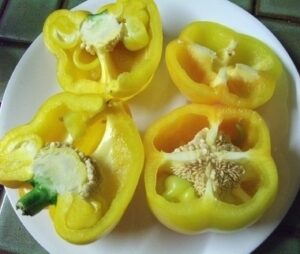
Even when growing in the best soil possible, there are usually not enough nutrients to power a full season growth of bell peppers. This is especially the case for any pepper plants that grow in containers or raised beds, although in-ground crops usually require additional nutrients as well.
But that is exactly where giving plants an extra boost with fertilizer can make all the difference. When applied correctly, it can give bell pepper plants the energy they need in order to stay healthy, grow strong, and best of all, produce an amazing harvest of peppers all summer long!
How To Successfully Fertilize Bell Pepper Plants
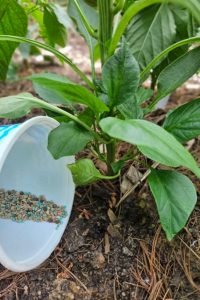
When it comes to bell peppers, not only is it important to use the right type of fertilizer on your plants, but it’s also vital to make sure you are using the right amount at the right time!
Giving your peppers too much fertilizer at one time will cause plants to focus all their energy on becoming bigger. This creates an excess of foliage growth as opposed to bloom and fruit production. On the flip side, too little resources will leave plants weak – and weak plants don’t have enough energy to put towards creating blooms and fruit either.
Giving bell pepper plants too much fertilizer all at once results in pure foliage growth – and little to no bloom production.
The key to success is to fertilize your bell pepper plants consistently, but in smaller doses that won’t overwhelm plants. You can accomplish this with granular or liquid fertilizers, depending on where your plants are in the growing process.
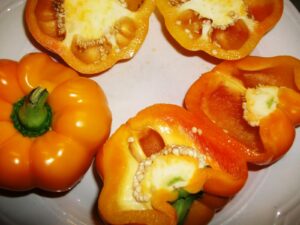
All About Fertilizers
Nearly all fertilizers that you purchase have a set of three numbers on the package that refer to its N-P-K makeup. This ratio tells you the amount of Nitrogen (N), Phosphorous (P), and Potassium (K) that are within the fertilizer mixture.
These numbers are important because different plants require different specific nutrients in order to either grow or produce their fruit or flowers. When it comes to peppers, each number helps the pepper plant in a unique way.
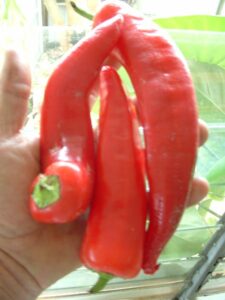
Nitrogen’s job is to essentially help plants grow and become bigger. While it is important for pepper plants, a high Nitrogen level won’t result in more blooms.
Phosphorous and Potassium, on the other hand are great for helping plants develop and set blooms. More blooms equal more peppers to harvest. So when looking for a ratio for fertilizing your bell pepper plants, choose one that has a lower percentage of Nitrogen but a higher percentage of both Phosphorous and Potassium.
Liquid vs Granular Fertilizers – How To Fertilize Bell Peppers
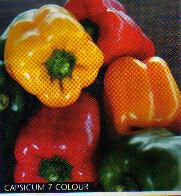
Liquid fertilizers are considered to be foliar fertilizers. This means that they can not only be applied to the soil but directly onto the plants’ foliage as well. This allows the plants to absorb the nutrients via their roots as well as their leaves and stems.
Granular fertilizers are applied directly to the soil surrounding plants. They are great for giving plants a slow and steady stream of energy over time.
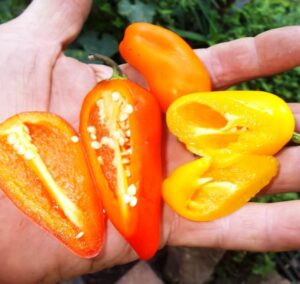
Granular fertilizers, on the other hand, are only to be applied to the soil around plants. They take longer to break down and are designed to give plants energy slowly over time. Both are great choices to use separately for fertilizing bell pepper plants. However, when you use them together, that’s when the magic really starts to happen!
When & How To Fertilize Bell Pepper Plants
How much fertilizer you use as well as the frequency you will need to apply will depend on the age and maturity of your bell pepper plants.
New, Young Pepper Plants
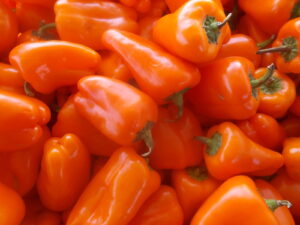
When you first transplant your bell pepper plants outside, you want to give them a bit of time to adjust before applying fertilizer. They need time to get used to the new soil they are in as well as being exposed to all of the outdoor elements.
It’s best to wait seven to ten days after planting before applying your first dose of fertilizer. This creates less stress for plants while still allowing them enough time to push out new roots.
With younger plants, choose an all-purpose liquid fertilizer. Commercial liquid fertilizers are a great choice, but natural options like compost tea or worm casting tea will work also to power young plants.
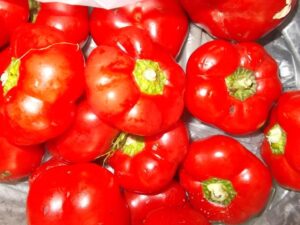
Fertilizing young plants with liquid fertilizer will help them get off to a fast start. Applying it more often but at a weaker concentration is best for continual growth.
When using commercial fertilizers, only apply them at half the recommended dose. This gives a steady supply but prevents giving your bell pepper plants too many nutrients all at once. Compost tea and worm casting tea are more than fine to use at full strength without diluting.
Apply these liquid fertilizers every seven to 10 days for the first month to create strong, early growth.
Early Summer – How To Fertilize Bell Peppers
After a month, it’s time to give your bell pepper plants a bit of slow-release, granular fertilizer. At this stage, your established plants are not only growing but also starting to put out blooms and fruit.
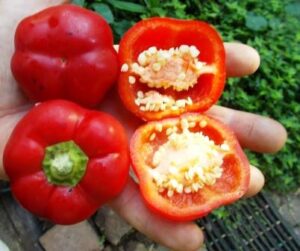
Follow the directions on the granular fertilizer package since each brand might vary slightly. Most granular fertilizers will have you mix in a specific amount into the soil surrounding your plants. Then, it is always best to water them in well.
Avoid getting the granules on the foliage of the plant and keep them a few inches away from the stem. Apply the fertilizer early in the morning. Continue to also apply the liquid fertilizer at a reduced amount. At this point extend the days between liquid feedings to every two weeks.
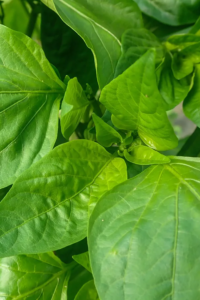
This one-two punch of using both liquid and granular fertilizers will have your bell pepper plants growing lush, healthy, and most importantly, producing all summer long!
I HAVE CAPSICUM BELL PEPPER & CHILLIE PEPPER SEEDS 4 SALE ON SITE
 Any questions or if buying, contact me HERE
Any questions or if buying, contact me HERE
![]()

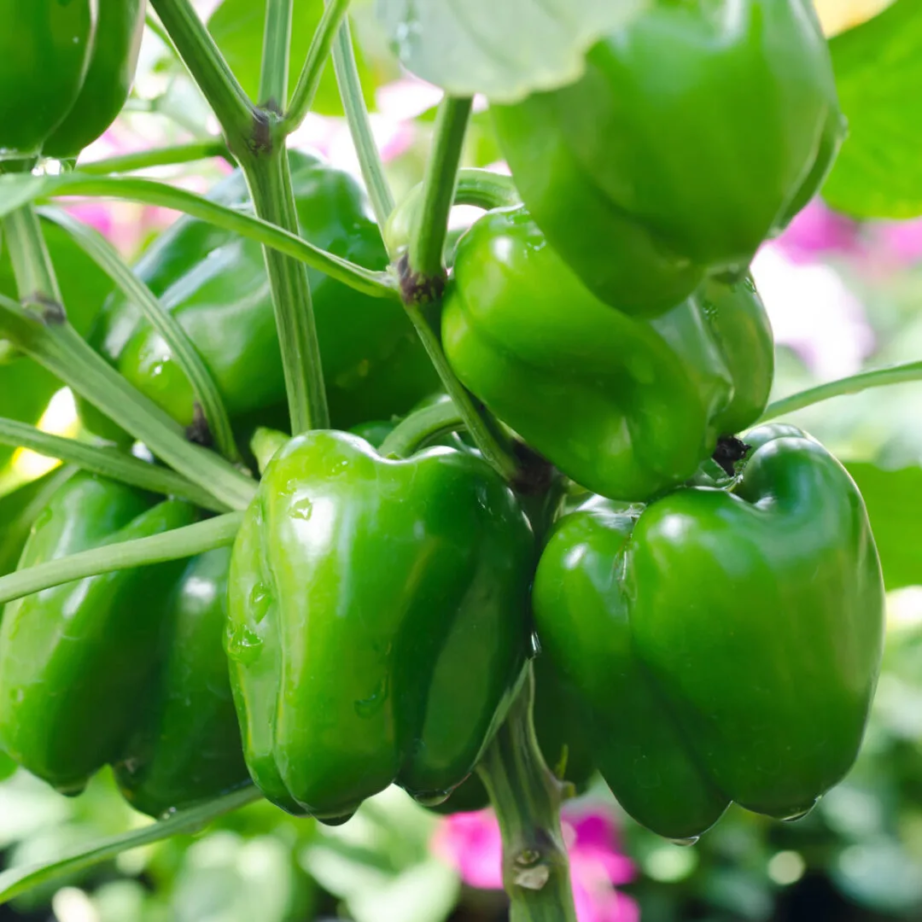
Recent Comments